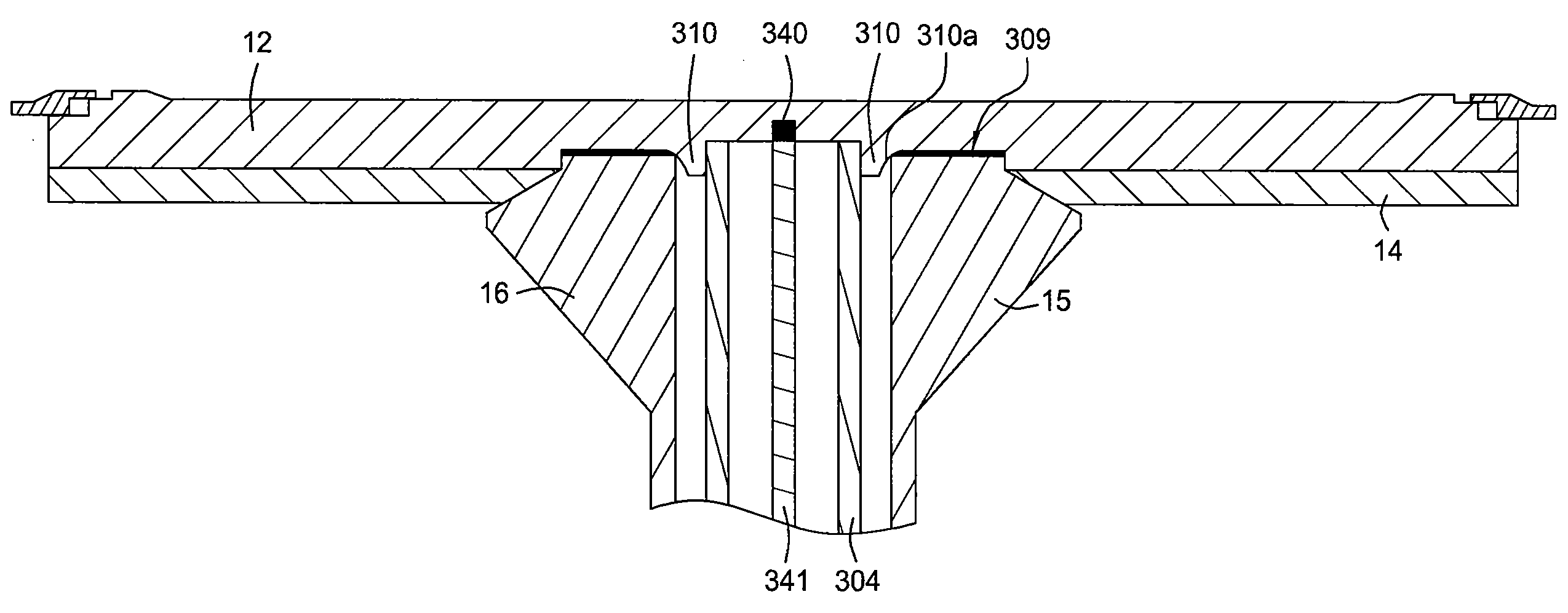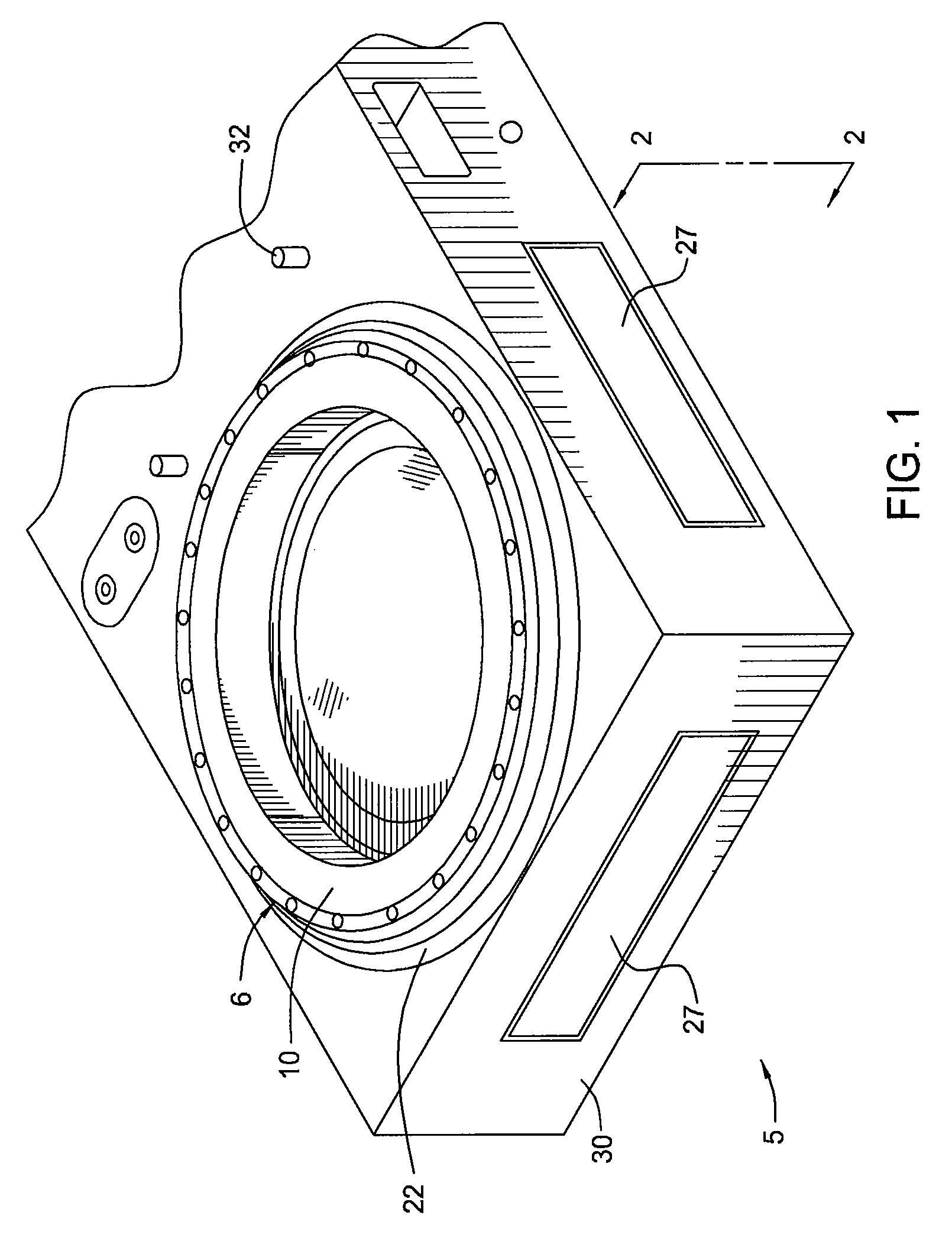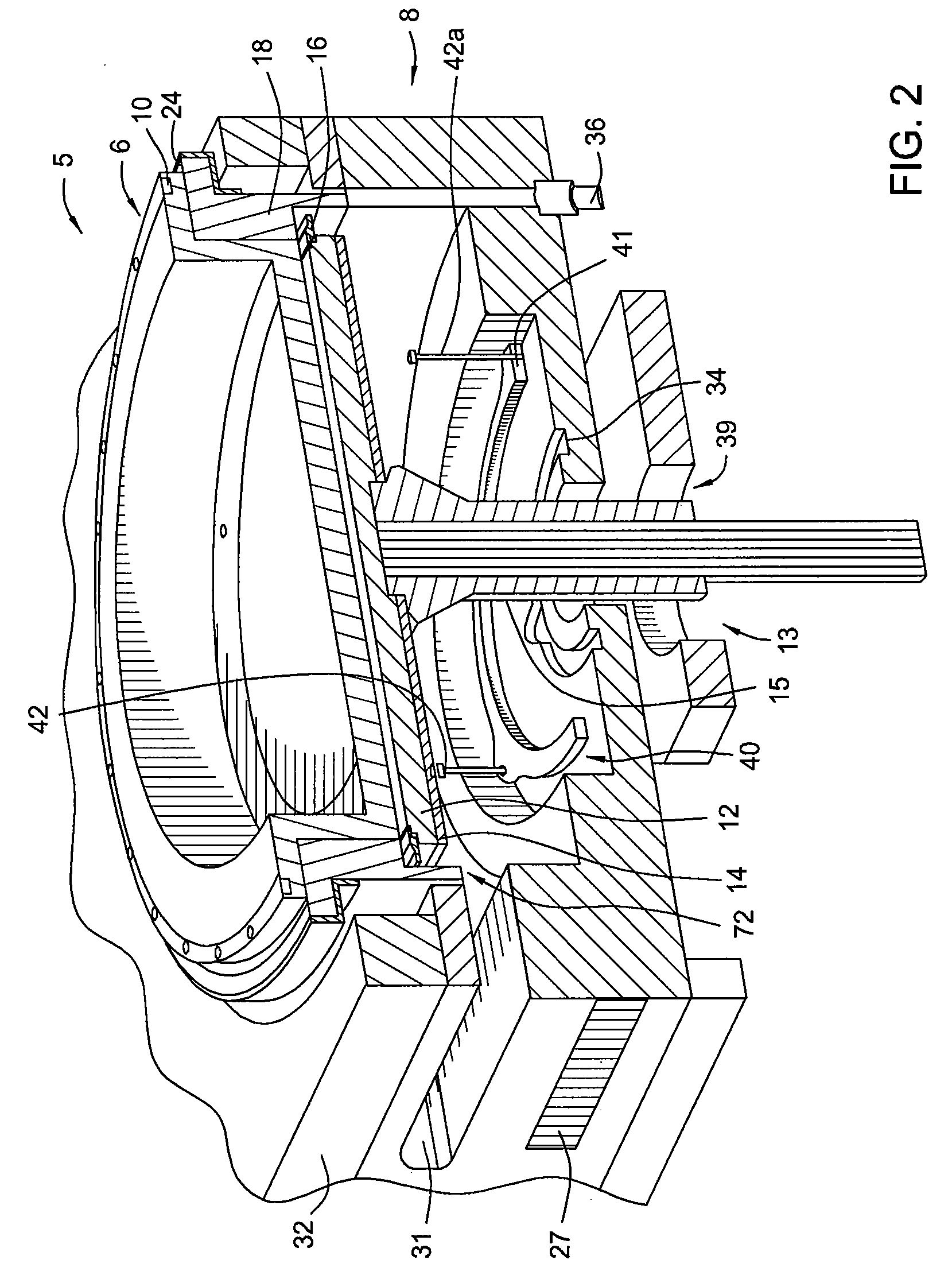High productivity plasma processing chamber
a plasma processing chamber and high-efficiency technology, applied in the direction of coatings, chemical vapor deposition coatings, electric discharge tubes, etc., can solve the problems of shortened life of critical chamber components, more downtime, and chamber downtime, so as to minimize the entry of process products, reduce the entry rate, and maximize the allowable time
- Summary
- Abstract
- Description
- Claims
- Application Information
AI Technical Summary
Benefits of technology
Problems solved by technology
Method used
Image
Examples
Embodiment Construction
[0034]Embodiments of the present invention generally relate to apparatus and methods for an improved semiconductor plasma-processing chamber.
[0035]FIG. 1 illustrates a single substrate plasma-processing chamber 5, which incorporates an embodiment of the present invention. The top assembly typical of such a chamber is not shown for clarity. The top assembly includes RF source, gas distribution assembly, gas boxes, and remote plasma source.
[0036]The chamber body 30 of plasma-processing chamber 5 is attached to a mainframe (not shown) that contains a wafer transport system (not shown) and system supporting hardware (not shown). The mainframe and system supporting hardware are designed to transfer the substrate under vacuum from one area of the substrate processing system, deliver the substrate to plasma-processing chamber 5 and remove the substrate when the process steps in plasma-processing chamber 5 are complete. A slit valve opening 31 (see FIG. 2) is provided for passing a substrat...
PUM
| Property | Measurement | Unit |
|---|---|---|
| power | aaaaa | aaaaa |
| power | aaaaa | aaaaa |
| power rating | aaaaa | aaaaa |
Abstract
Description
Claims
Application Information
 Login to View More
Login to View More - R&D
- Intellectual Property
- Life Sciences
- Materials
- Tech Scout
- Unparalleled Data Quality
- Higher Quality Content
- 60% Fewer Hallucinations
Browse by: Latest US Patents, China's latest patents, Technical Efficacy Thesaurus, Application Domain, Technology Topic, Popular Technical Reports.
© 2025 PatSnap. All rights reserved.Legal|Privacy policy|Modern Slavery Act Transparency Statement|Sitemap|About US| Contact US: help@patsnap.com



